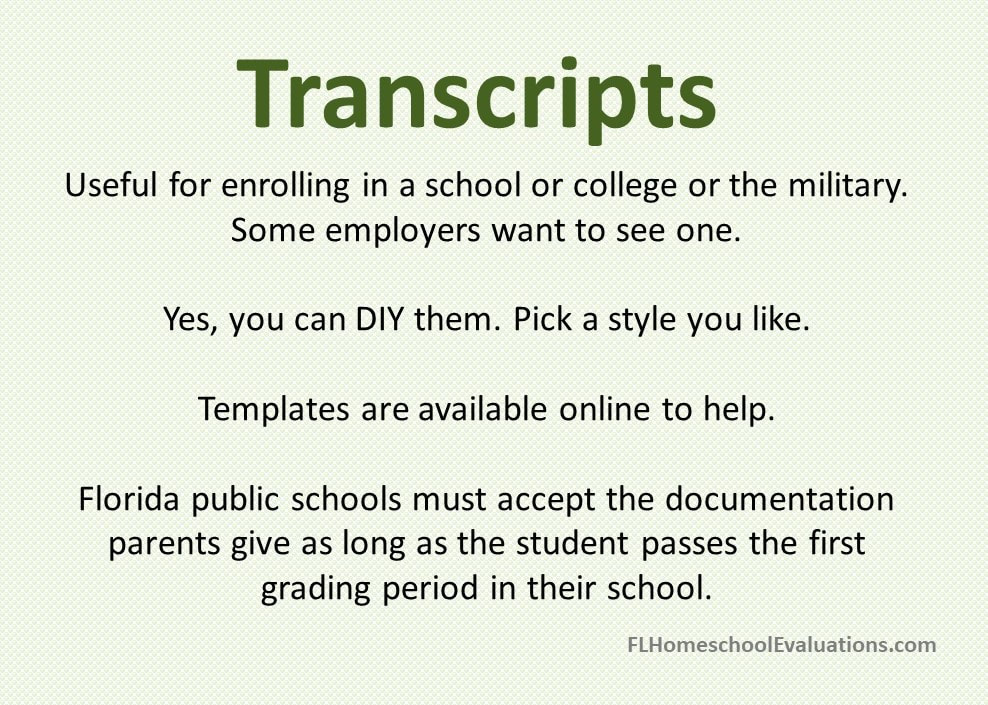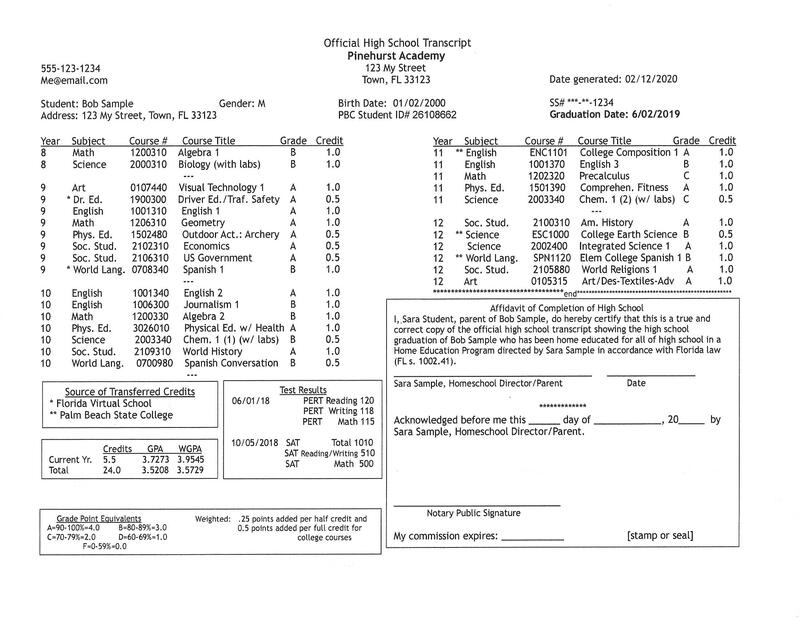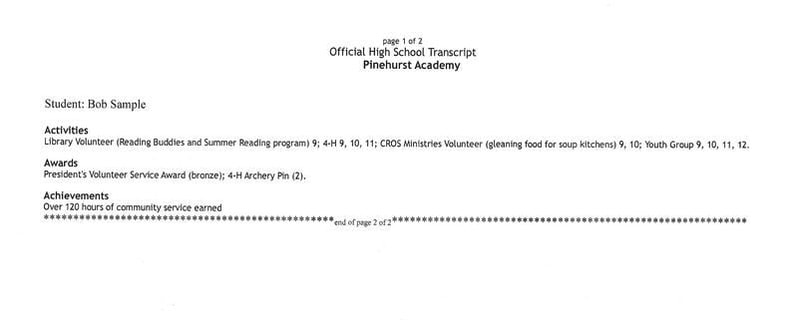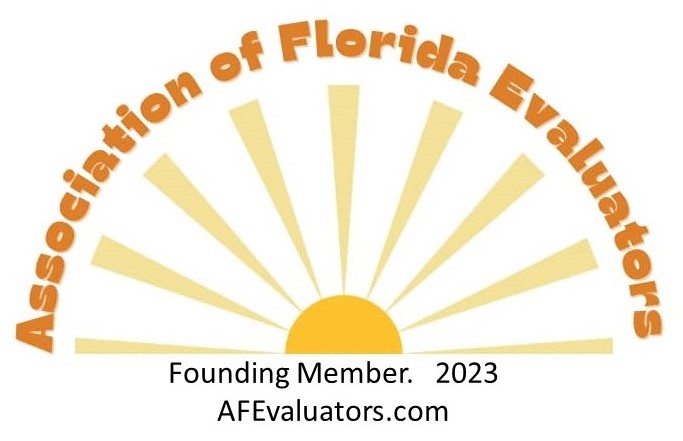Finished Home Educating?
Whether transferring to a school, or moving out of state, or graduating high school, or transferring to a different homeschooling option (such as the PEP), the home education program needs to officially terminated. Q: I'm done home educating*. What do I need to do? *See the bottom of the page for information for those using the PEP or moving within FL or out of the state. ---- A: You'll need to send documents (a Letter of Termination and an evaluation) to the school district and it is smart to have paperwork ready for the school, college, employer, etc. in your child's future. (1) Per Florida law, you'll need to send a Notice of Termination (also called a Letter of Termination) to the school district to let them know that your child is done homeschooling regardless of whether you are sending your child to a school, moving out of state, or graduating your child. (This Letter of Termination is to be sent within 30 days of finishing homeschooling, though you'll likely want to send it in as soon as you are done if you want to start the enrollment process at a school. If you are enrolling your child in a k-12 school in the fall, it's best to wait until after the end of the public school's school year to send the Letter of Termination so the district won't expect the child to be enrolled for the remainder of the current school year.) Note: If your child is on Florida's Family Empowerment Scholarship: Unique Abilities (the scholarship for students with special needs that was previously known as the Gardiner), the scholarship must be informed when ending your homeschooling. Emailing the Letter of Termination to the school district and cc'ing the scholarship on that email is a way to do this. (2) An evaluation must be submitted within 30 days of terminating the home education program. This final evaluation is the same as any other evaluation but is due within 30 days of ending the home education program--even if your ordinary evaluation deadline (based on the anniversary of your Letter of Intent) is not yet here. This evaluation verifies that your child ended homeschooling successfully. It is usually sent with the Letter of Termination but they can be sent separately. If your child is being enrolled in public school, most districts will require you to turn in a Letter of Termination before enrolling the child. (Private schools set their own rules, so contact them to find out the documentation they will want to see.) The school may ask to see a copy of the evaluation. Or they might contact the district's Home Education Liaison in order to confirm that a positive evaluation was received. With a positive evaluation, the child should be placed in the grade expected for the child's age--rather than back a grade level. The school might also ask to see a copy of the child's portfolio, though if you provide a report card or transcript that's usually all they need. Florida public schools will place students according to their Pupil Progression Plan which basically places students according to their age as long as a passing evaluation is on record. A few schools may require a placement test, especially for those entering first grade level because their accreditation agency requires it. (3) Make records for the next school, college, employer, etc. We recommend that parents type a transcript in order to smooth the process of enrolling a child in school, though a report card may be sufficient for some schools. You can find free sample report cards and/or transcripts online. (There are lots of styles because schools use a wide variety of styles. Don't worry about the style. Just pick one.) Online templates will allow you to just fill in the appropriate information. There are even templates for high school transcripts, available for a fee, that can be sent to high schools or colleges via the same electronic clearinghouse that many high schools use. Didn't keep grades? That's okay. Most homeschooling families don't because they focus more on learning than on assigning letter or number grades. So, how do you figure out report card (or transcript) grades if you didn't grade individual assignments? You think holistically about your student's work over the course of the year. Did your student struggle a lot with the material or use material that was below the grade level expected for your child's age? Then you'll want to assign C's or D's (or F's if your child really needs to be placed at a lower grade level--though you'll want to discuss this with the evaluator). Did your student excel or use material that was above the grade level expected for your child's age? Then you'll want to assign A's or A+'s. And so on. The point of the grades is to let the school know whether your child will need extra help or remediation or whether your child will need enrichment and more challenges. What if your child took some classes from a program that assigns grades such as FLVS, dual enrollment college courses, Acellus Power Homeschool, or some other program? Your report card or transcript should reflect all the classes that you accepted as part of your student's education. Include those classes and their grades on your documentation, but you may want to put an asterisk by the course name and elsewhere note the source of the classes. In addition, you may want to also provide a copy of the grades directly from the source to the school or college that the student is enrolling in. Florida public schools are required to accept documentation parents give them as long as the child passes the first grading period in school. Of course, be sure that the documentation accurately reflects what the child has learned, so you aren't setting your child up for failure. (Florida public schools place students by age rather than curriculum levels used. A report card or transcript won't change the grade level at which a school places a student, but it can help with registering the child and placing appropriately in either remedial, regular, or advanced classes. The school cannot require the FSA in order to enroll in a public school.) Transcripts can record high school credits earned, and must be accepted by a Florida public high school as long as the student passes the first grading period in their school. But the student will likely have to eventually take the EOC (end of course) exams in Algebra 1, Biology, and/or Geometry to finalize credits in those subjects, so the student can graduate from a Florida public high school; the EOC exam scores are used to determine a percentage of the student's final grade in those classes per current Florida law. However, if your student took the math portion of tests like the SAT or ACT, those scores can be used in place of EOC math scores. Let me know if we can help with the final evaluation. Cheryl Trzasko [email protected] Graduating high school?
If your student is graduating high school, additional documentation should also be put together. See our pages on high school or high school graduation for information on other documents smart parents will keep for their students (course descriptions, transcript, diploma, Affidavit of Completion) and other pertinent information including information on the Bright Futures scholarship. *Moving within Florida?
A Letter of Termination with evaluation to the old county county and a Letter of Intent to the new county are not required if you are moving within Florida and continuing to home educate.
Instead, use a Transfer form if you have moved to a new county within Florida. The Transfer form should be sent to both the old and new Florida counties within 30 days after having moved. |
Finished Home Educating?
Submit to the district within 30 days:
If transferring the child to a school or graduating the school, prepare for your child:
and/or
Note: Transcripts are especially recommended for high school (including for middle school if high school classes were completed during middle school).
Report cards are fine for younger students, though many parents choose to use both documents for their children. Finished high school?
Students who have finished high school should have, in addition to a transcript, a list of course descriptions, a diploma, and an affidavit of completion. See our page on graduation for more information. A student may not need these additional documents to get into college, but may need them at some other point in life. Preparing such documents now can prevent issues in the future. Sample Transcript
This shows the front and reverse sides of a sample high school transcript with an Affidavit of Completion included on the transcript. (The Affidavit of Completion can be a separate document. It is the official proof of high school graduation for a home education student.)
Course numbers on this sample were taken from the Florida Dept of Education's list of official course titles. Home education students don't have to use their courses, but using their course numbers makes it easier for colleges or high schools to identify the classes taken. If the public schools have no class similar to one your child took, look for the "transfer credit" number for the academic subject area.
A transcript should ideally be one page--no more than front and back of a page, though front only is ideal. Activities, awards, and other achievements can be displayed here.
Q: Can a Florida public high school reject my child's transcript? A: A Florida public high school, under Florida's Uniform Transfer of Credit Rule, should accept an official transcript from a parent as long as the student then passes the first grading period in the school. Note that guidance counselors are not always familiar with this rule and may need to be educated on it. This website can help: https://www.flhef.org/transfer-of-credit-rule/ This FAQ page from the Florida Dept of Education should help educate guidance counselors: https://www.fldoe.org/core/fileparse.php/7562/urlt/2021TransferofCreditsFAQs.pdf NOTE: Every year we are contacted by untrained guidance counselors looking for transcripts or report cards or other documentation from us rather than from parents. When enrolling a child in school, give the school a report card or transcript--even if someone in the office says it's not needed--to avoid a panicked search for records later.
Note: 17 years after graduating from high school, Cheryl had graduated from college, worked on a graduate degree program, and had many years of career experience when a potential employer wanted to see her high school transcript. We always advise creating a transcript and other documents that might be needed in the future. See our page on high school graduation for more information. *PEP (Personalized Education Program)
1. Leaving the PEP
If your child was using a PEP program but is now done, you must notify the scholarship funding organization (Step Up for Students or AAA Scholarships) that your child will no longer homeschool using the PEP. OR 2. Starting with the PEP Previously sent in a Letter of Intent and were home educating your child, but now want to stop home educating in order to use the PEP option instead? Then send in a Letter of Termination and a home education evaluation to the school district to end the home education. Be sure to file a Student Learning Plan on the scholarship funding organization's website. The Student Learning Plan involves checking boxes on an online form. * Moving Out of State
Each state and/or country has its own education laws. Even those states with laws that sound similar to Florida's will not be exactly the same. Research the laws in the new area. A large long-lasting homeschool support group specific for that area is usually a great place to check how the homeschooling laws work in practice. Though read the actual laws for yourself, too, to verify. Even if continuing to homeschool with the same methods and materials, once you move out of Florida, you'll need to follow the laws in your new location. |
The Trzasko Family
Cheryl & Mark Trzasko
(pronounced Trahs-koh) have homeschooled their own from the start. Two have graduated high school as homeschoolers with college credit earned already. One is now a teacher, and the other will soon finish serving our country. Our youngest are still learning at home. Cheryl was homeschooled for part of her early education. We are passionate about helping others homeschool and protecting their rights. Discover us on social media!We offer a free support group on Facebook for those who want more information.(This is not for advertising.) Answer the questions fully to join. (c) 2024
No. We do NOT want unsolicited website help. |
|










